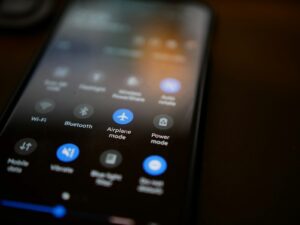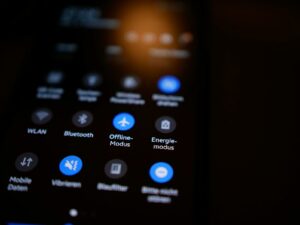How Connectivity Protocols Influence IoT Device Performance
IoT Connectivity Protocols Impact: Range and Coverage
The choice of IoT connectivity protocols significantly affects the range and coverage of IoT devices, which is crucial for the successful deployment of smart systems in urban environments like Riyadh and Dubai. Various protocols, including Wi-Fi, Bluetooth, Zigbee, and LoRaWAN, offer different ranges and capabilities. Wi-Fi, for example, provides high data transfer rates over short distances, making it ideal for indoor applications such as smart homes and offices. However, its range is limited, requiring multiple access points to cover larger areas.
In contrast, protocols like LoRaWAN are designed for long-range communication, making them suitable for applications that require extensive coverage, such as smart city infrastructure and agricultural monitoring. LoRaWAN can transmit data over several kilometers with low power consumption, but it offers lower data transfer rates compared to Wi-Fi. This trade-off between range and data rate is a critical consideration when designing IoT systems to ensure they meet the specific needs of the application.
Dubai’s ambitious smart city projects benefit from a mix of connectivity protocols to optimize coverage and performance. For example, LoRaWAN is used for city-wide sensor networks that monitor environmental conditions and infrastructure health, while Wi-Fi and Bluetooth are employed for high-bandwidth applications like public Wi-Fi and indoor navigation systems. By strategically combining different protocols, Dubai can ensure comprehensive coverage and reliable connectivity for its diverse IoT applications.
Power Consumption Considerations in IoT Connectivity
The impact of IoT connectivity protocols on power consumption is a crucial factor, especially for battery-powered devices that need to operate over extended periods. Low-power protocols like Zigbee and Bluetooth Low Energy (BLE) are designed to minimize energy usage, making them ideal for applications such as wearable devices, smart sensors, and home automation systems. These protocols enable devices to maintain long battery life, reducing the need for frequent recharging or battery replacement.
In Saudi Arabia, the focus on sustainable and energy-efficient technologies has led to the adoption of low-power IoT protocols in various sectors. For instance, Zigbee is widely used in smart metering systems to monitor and manage energy consumption in residential and commercial buildings. This protocol’s low power consumption and mesh networking capabilities ensure reliable data transmission while conserving energy, aligning with the country’s goals of enhancing energy efficiency and sustainability.
Bluetooth Low Energy (BLE) is another protocol favored for its power-saving features. It is commonly used in healthcare and fitness applications, such as wearable health monitors and fitness trackers, where long battery life is essential. In the UAE, healthcare providers leverage BLE-enabled devices to offer remote patient monitoring and telemedicine services, ensuring continuous health tracking without frequent battery changes.
Data Transfer Rates and Their Impact on IoT Applications
The choice of IoT connectivity protocols also influences the data transfer rates, which directly impacts the performance and capabilities of IoT applications. High data rate protocols like Wi-Fi and cellular networks (e.g., 4G, 5G) support bandwidth-intensive applications that require fast and reliable data transmission. These protocols are suitable for applications such as video surveillance, real-time data analytics, and streaming services, where high-speed connectivity is crucial.
In Dubai, the implementation of 5G technology is revolutionizing the capabilities of IoT devices by offering ultra-high data transfer rates and low latency. This advancement enables the deployment of sophisticated IoT applications, such as autonomous vehicles, smart traffic management, and immersive virtual reality experiences. The high data rates provided by 5G ensure seamless connectivity and real-time responsiveness, enhancing the efficiency and effectiveness of these applications.
On the other hand, protocols with lower data transfer rates, such as Sigfox and NB-IoT, are designed for low-bandwidth applications that prioritize wide coverage and low power consumption over speed. These protocols are ideal for applications like environmental monitoring, asset tracking, and smart agriculture, where small amounts of data are transmitted infrequently. In Riyadh, NB-IoT is used for smart irrigation systems that optimize water usage based on soil moisture levels and weather conditions, demonstrating the protocol’s suitability for large-scale, low-bandwidth IoT deployments.
Strategic Implementation of IoT Connectivity Protocols
Optimizing IoT Networks with Hybrid Connectivity
To maximize the benefits of different IoT connectivity protocols, businesses and city planners are increasingly adopting hybrid connectivity solutions. This approach involves integrating multiple protocols within a single IoT network to leverage their respective strengths and mitigate their weaknesses. For example, a smart building might use Wi-Fi for high-bandwidth applications like video conferencing and digital signage, while utilizing Zigbee or BLE for low-power applications like lighting control and environmental monitoring.
In Saudi Arabia, hybrid connectivity solutions are being implemented in smart infrastructure projects to enhance performance and reliability. By combining protocols such as Wi-Fi, LoRaWAN, and Zigbee, cities can ensure comprehensive coverage, efficient data transmission, and optimal power management. This integrated approach supports the development of resilient and scalable IoT networks that can adapt to diverse and evolving urban needs.
Dubai’s smart city initiatives also exemplify the advantages of hybrid IoT connectivity. The city’s IoT ecosystem integrates various protocols to create a cohesive and efficient network that supports a wide range of applications, from smart transportation and public safety to energy management and environmental monitoring. By leveraging the strengths of each protocol, Dubai can maintain high levels of service quality and operational efficiency across its smart city infrastructure.
Future Trends in IoT Connectivity
As IoT technology continues to evolve, new connectivity protocols and advancements are expected to further enhance the capabilities and performance of IoT systems. Emerging protocols such as 6LoWPAN and Thread are designed to provide secure, low-power, and scalable connectivity for IoT devices. These protocols are gaining traction in smart home and industrial IoT applications, offering improved interoperability and network efficiency.
In Riyadh and Dubai, the adoption of next-generation IoT connectivity protocols is poised to drive innovation and growth. Businesses and government entities are investing in research and development to explore the potential of these emerging technologies. For instance, Thread’s mesh networking capabilities and robust security features make it an attractive option for smart city applications that require reliable and secure communication.
The integration of artificial intelligence (AI) and machine learning (ML) with IoT connectivity protocols is another trend shaping the future of IoT. AI-driven analytics can optimize network performance by dynamically adjusting connectivity parameters based on real-time data and usage patterns. This intelligent approach enhances the efficiency and adaptability of IoT networks, ensuring they can meet the demands of increasingly complex and data-intensive applications.
Conclusion: Strategic Connectivity for IoT Success
In conclusion, the impact of IoT connectivity protocols on the performance, efficiency, and scalability of IoT devices is profound. By carefully selecting and implementing the appropriate protocols, businesses and city planners in Saudi Arabia, the UAE, Riyadh, and Dubai can optimize their IoT networks to meet specific needs and challenges. The strategic integration of multiple protocols within hybrid connectivity solutions ensures comprehensive coverage, efficient data transmission, and optimal power management. As new protocols and technologies emerge, the continued evolution of IoT connectivity will drive innovation and enable the development of smarter, more responsive systems that enhance business success and improve quality of life.
—
#IoTConnectivityProtocols, #IoTDevices, #ConnectivityImpact, #PowerConsumption, #DataTransferRates, #SaudiArabia, #UAE, #Riyadh, #Dubai, #ArtificialIntelligence, #GenerativeAI, #ModernTechnology, #BusinessSuccess, #LeadershipSkills, #ProjectManagement













